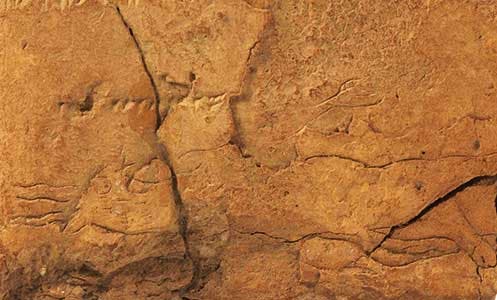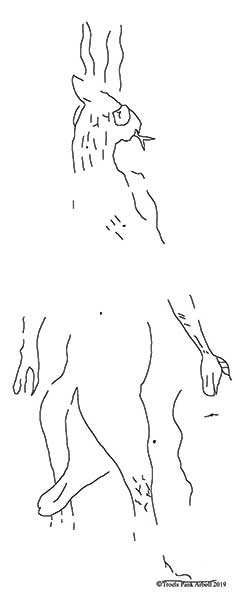
Danish Assyriologist Troels Pank Arbøll was studying cuneiform tablets discussing ancient medicine in a Berlin museum when he stumbled across a peculiar image. Etched on the corner of one of the tablets was a horned demon with a tail and a snake’s tongue — no one had noticed it before. According to the adjoining cuneiform text, the demon was the cause of epilepsy, or what the Assyrians and Babylonians called “Bennu”.
“We have known for a long time that the Assyrians and Babylonians regarded diseases as phenomena that were caused by gods, demons or witchcraft. And healers were responsible for expelling these supernatural forces and the medical symptoms they caused with drugs, rituals or incantations. But this is the first time that we have managed to connect one of the very rare illustrations of demons in the medical texts with the specific disease epilepsy,” Arbøll said in a statement.
In ancient texts such as these, Bennu-epilepsy was regarded as a dreaded disease whose symptoms included seizures, loss of consciousness or sanity, and peculiar behavior — in some cases, the text describes patients who cried out like goats.
The tablet analyzed by Arbøll claims that the epilepsy demon was acting on behalf of Sîn, the lunar god. By the scholar’s interpretation of the text, Assyrians and Babylonians believed that there was a connection between the moon, epilepsy, and insanity.

This idea spread wide and fast — thousands of years later you can still find it in western cultures. The English word ‘lunacy’, for instance, is a remnant of this interpretation.
Many cultures regard epilepsy as a “sacred disease”. People who had it were either considered “divine and religiously inspired” or “possessed by a demon or unclean spirit”. For instance, the Jewish Talmud refers to a person with epilepsy as “nikhpe”, meaning “one of writhes”.
Today, the term “epilepsy” is medically defined as “a neurological disorder with recurrent sensory disturbances, loss of consciousness or convulsions; associated with abnormal electrical activity in the brain.”
“In other words, the views on illness, diagnoses and treatments in the earliest civilisations have had a significant impact on later perceptions of illness, even in recent history, “said Arbøll, who is an Assyriologist at the University of Copenhagen.
The Danish scholar’s findings were described in the Journal des Médecines Cunéiformes.









